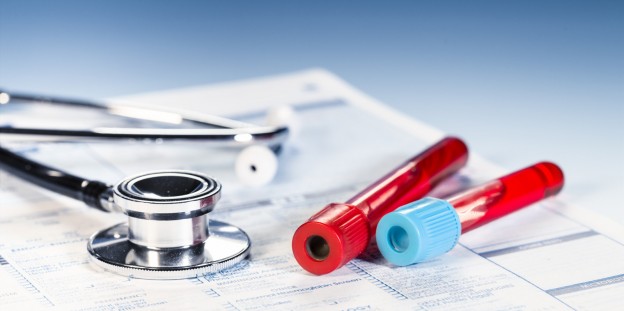Absolutely! If your doctor has told you that you don’t have PCOS because you don’t “look like it”, then he or she is wrong. You cannot diagnose PCOS or rule it out based on what someone looks like. You can have a suspicion that a woman has PCOS if she’s overweight, has acne, thinning head hair and excess facial hair, but even then there are other conditions that need to be investigated such as adrenal hyperplasia. Up to 40% of PCOS women are thin. Does that mean that these women aren’t insulin resistant? Not necessarily, even thin women with PCOS can be insulin resistant. Confusing isn’t it? Sometimes, partly because everyone is different and PCOS can manifest many different ways and have several different root causes. This is why it’s best to consult with someone who is well versed in PCOS, not all family doctors or even endocrinologists are.
Estrogen Metabolism or Clearing Excess Estrogen
Sex hormones are produced in the body via the following assembly line:
Cholesterol —-> Pregnenolone —-> Progesterone —–> Androstenedione —-> Testosterone —-> Estradiol (one form of estrogen). Estradiol is our end product and when there is the right amount of our end product, it’s the liver’s job to take any extra and break it down through a series of steps known as Phase I and Phase II liver detoxification. There are several ingredients required for successful breakdown and clearance of estrogen, as well as chemicals, pollution, pesticides etc. that can act like estrogen. We want to remove any excess estrogen and these waste products so that they don’t accumulate and do harm such as promoting reproductive cancers.
The first step in estrogen breakdown is conversion of estradiol to estrone. Estrone is then metabolised through Phase I liver detoxification (hydroxylation) into 2-hydroxyestrone. Cruciferous vegetables, flaxseeds, soy and rosemary supply substances like indole-3-carbinol that are necessary for this step to occur. The next step in estrogen breakdown is Phase II detoxification (methylation) which converts 2-hydroxyestrone to 2-methoxyestrone. This step requires vitamin B6, B12 and ACTIVE folic acid (5MTHF) to proceed. The active folic acid part is important as most folic acid from supplements is inactive. Some people have a defective gene that doesn’t allow them to process folic acid properly, so that they cannot make 5MTHF. This causes sluggish liver detoxification. There are 3 final procedures the liver can do to our 2-methoxyestrone to package it up for elimination. Glucuronidation requires glucaric acid, methlyation requires active folic acid again (5MTHF) and sulfation requires sulfur.
If any of these ingredients is missing, estrogen breakdown will be incomplete and estrogen, estrogen breakdown products and other waste like it, can build up in your system creating health problems like endometriosis, acne, fibroids, painful periods, hormone related cancers, heavy periods, infertility and other hormone imbalance conditions. In treating these conditions, I find it successful to provide (in the form of supplements) each component necessary for successful completion of phase I, phase II and the final packaging steps.
The typical benefits of enhancing estrogen metabolism this way include reduced risk of hormone related cancers, lighter periods, less cramping, less breast tenderness, reductions in fibroids, improved fertility, and clearer skin.
How Often Should I Do an Estrogen Detox?
That depends on the person and their particular symptoms, but for the average person, once per year.
Should Men do Estrogen Detoxification?
Yes! Men produce estrogen as well and excess estrogen and accumulation of estrogen like chemicals like bisphenol a, can bind to estrogen receptors in men and promote cancer such as prostate cancer.
Source: Medicine (Baltimore). 2015 Jan;94(1):e211 . Bisphenol a and hormone-associated cancers: current progress and perspectives. Gao H1, Yang BJ, Li N, Feng LM, Shi XY, Zhao WH, Liu SJ.
The 3 Worst Foods for Acne
There are three foods that I see causing problems with acne the most frequently:
- Dairy products – dairy is one of the most frequent food sensitivities there is. These are mild immune system reactions to foods that create inflammation. Acne is a very inflammatory condition, anything that provokes or increases inflammation in the body would be best to avoid. There is IgG Food Sensitivity testing that can be done to see if dairy is a food sensitivity for you, or you can try strictly avoiding dairy for at least 3 weeks to see what happens to your skin.
- Eggs – eggs fall under exactly the same category as dairy, they are a frequent food sensitivity and they create inflammation that seems to be centred in the skin. Eczema, psoriasis and acne can all be skin manifestations of an egg sensitivity.
- Sugar and processed carbs – high glycemic index starches and sugar provoke a high insulin response. Insulin in turn can increase the activity and/or the level of certain hormones, including testosterone. Higher testosterone activity or level can cause deep, painful cystic type acne.
The Benefits of a Detox for Women
Firstly, what exactly do I mean by a detox? Detoxification is the process whereby the liver breaks down toxins, chemicals, pollution, your own body waste and excess hormones. This process has to occur in order to make these garbage compounds into something the body recognizes as garbage so that they can be eliminated. If waste is not fully broken down, or detoxified, it can linger in your system and accumulate. The liver has two processes where it breaks these down called phase I and phase II liver detoxification. Certain vitamins, minerals and other substances from plants help ensure that this process runs smoothly, such as vitamin B6, vitamin B12, active folic acid (5 methyltetrahydrofolate or 5MTHF), indole-3-carbinol, glucarate, sulfur, N acetylcysteine and so on. If your body doesn’t have enough of these, toxins will get stuck in your system.
Because detoxification is part of the process to break down and excrete excess hormones, doing a detox can help:
- Acne
- Heavy periods
- Painful periods
- Infertility
- PMS symptoms
- Endometriosis
- Uterine polyps
- Fibroids
- Many other hormone related conditions.
Clearing toxins from your system can also reduce risk for hormone sensitive and other cancers.
Signs and Symptoms of Hormone Imbalance
How would you know if you had a hormone imbalance? Most of the women I see already have an inkling that something is out of balance by the symptoms that they are experiencing:
- Hair loss
- Acne
- Irregular periods
- Night sweats
- Hot flashes
- Infertility
- Heavy periods
- Painful periods
- Fibroids
- Ovarian cysts
- Uterine polyps
- Excessive facial or body hair
- PMS
- Premenstrual migraines
Most often they have already visited their family doctor who “checked their hormones” and told them “everything is normal” or offered them the birth control pill.
There are three main problems here:
- By checked their hormones, most doctors mean they’ve done a very superficial screening of hormones, LH, FSH, maybe estradiol and maybe progesterone, but often not measured on specific dates of the menstrual cycle that make the results clinically meaningful.
- When “everything is normal” even though you feel that hormones are imbalanced, it’s because the “normal” ranges for hormones are extremely wide and so even abnormal people fall into the “normal” range.
- Birth control pills only mask the existing hormone imbalance, they don’t correct it.
If you feel like you have a hormone imbalance, always ask for a copy of blood work results so that you can see exactly how extensive testing was and exactly where your results fall in the “normal” range (normal is always in quotes because lab ranges rarely refer to what is actually normal, it is more often an average of unhealthy people). 99% of the time you will find that either: a) only a very few hormones have been tested and/or b) one or more of your results were borderline.
Polycystic Ovarian Syndrome or Not?
Irregular periods, acne, hair loss, fatigue, weight gain, sluggish metabolism, at first glance these symptoms seem to point to PCOS. However, blood tests show a different story, in PCOS you would expect to see high androgen levels (testosterone, DHEAs) but this patient has low testosterone, low DHEAs, low estradiol and here’s the kicker – high cortisol! Her doctor had refused to do the cortisol testing which ultimately provided the solution to the puzzle of her symptoms which she has complained to her doctor about for years. It still remains to investigate why her cortisol is elevated. There are herbs that can be used to lower cortisol, but we’ll refrain from that until we can collect more data on why it’s elevated.
It’s easy in medicine to make assumptions and jump to conclusions, but this patient is a perfect example of why doing our due diligence and thoroughly investigating through diagnostic testing is important.
Your Hormone Levels are “Fine” (Not!)
Many of the women that I see every day feel like there is a problem with their hormones, however, they’ve been to their family doctor who has told them that their hormone levels are “fine”. These women are suffering from infertility, hair loss, irregular periods, excessive facial or body hair, acne, peri-menopause, mood swings, low libido and PCOS, all of which are fairly obvious signs of hormone imbalance.
Here’s why you may be told that your hormones are “fine” when they’re actually not:
1. Countless patients haven’t even had the tip of the iceberg measured when it comes to their hormones. They’ve been trying to conceive for 3 years, yet no one has ever thoroughly measured their hormones. They’ve never had testosterone, DHEAs, androstenedione, and DHT measured. These are all hormones that can impact fertility.
2. Hormones vary from day to day and certain ones are really only clinically relevant at certain points of the menstrual cycle, but no one specified what day to have them measured. LH, FSH and estradiol should be measured on day 3 of a menstrual cycle. Progesterone should be measured 7 days post ovulation. If there is a hormone related problem, the relevant hormones should probably be measured more than once to confirm if they’re normal or not.
3. Hormone “normal” ranges are actually “abnormal” ranges. The lab ranges for hormones are particularly unreliable as indicators of good hormonal health. As a lab insider (I worked in one for 20 years), I know how normal ranges are set. Lab technologists average the results from a given number of samples and the average of those samples becomes the “normal” range. The problem with this is that doctors only order hormone blood work from people with a hormone related condition like infertility, hair loss, irregular periods, excessive facial or body hair, acne, peri-menopause, mood swings, and low libido. So if you average the results of an abnormal population and then call that your normal range, what you’ve actually got is an “abnormal range” and abnormal people will fit nicely into it so that their results look “normal” even though they clearly have a hormone related problem.
When I’m looking a patient’s blood work, I use my own optimal range, rather than the lab’s abnormal range to interpret whether the hormone blood tests are normal or not. I also like to see thorough hormone blood work and have it done at specific points in the menstrual cycle.


